Some reptiles are chill, low-maintenance pals. Others look like they just stepped out of Jurassic Park. If you’ve ever dreamed of having a dragon perched on your shoulder or a tiny T. rex roaming your living room, this is your moment. Reptiles aren’t just fascinating—they’re full of personality, easy to love, and often way easier to care for than people think. Whether you’re after a calm, beginner-friendly companion or a creature that looks like it could battle a pterodactyl, there’s a scaly superstar waiting for you. Let’s meet the reptiles that make great first-time pets—and a few that bring ancient vibes with a modern twist.
Leopard Gecko
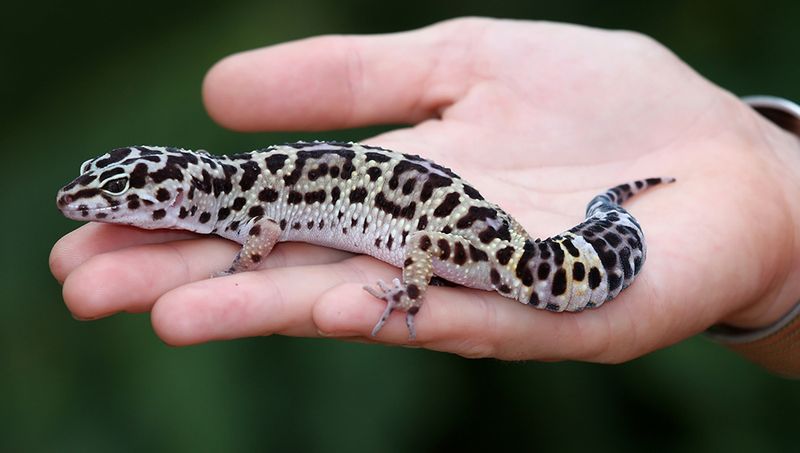
Leopard geckos are charming little creatures that make perfect pets for beginners. Their calm demeanor and nocturnal habits make them fascinating to watch during the evening hours. These docile reptiles are known for their distinct spotted skin patterns, reminiscent of a leopard.
With minimal care requirements, they thrive in a simple terrarium setup. They are also one of the few reptiles that vocalize, making soft chirping sounds. Leopard geckos have a gentle nature and are easy to handle, which endears them to reptile enthusiasts around the world.
Bearded Dragon
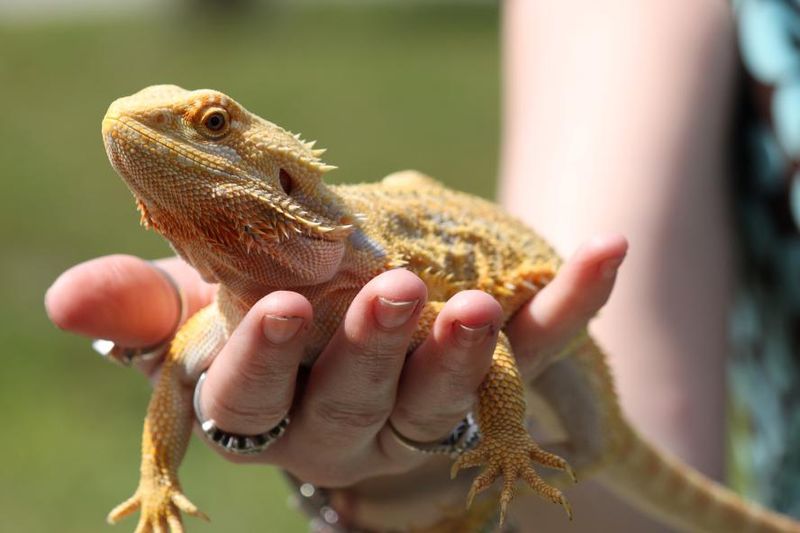
Bearded dragons are social reptiles that enjoy interacting with their owners. Known for their friendly attitude, they make wonderful pets and can even recognize their owners. These reptiles are adaptable to various environments and are easy to feed, with a diet consisting of vegetables and insects.
Their unique ‘beard,’ which can puff up when they feel threatened, adds to their intriguing appearance. Bearded dragons are diurnal, meaning they are active during the day, making them an ideal pet for those who like to observe their pets in daylight.
Corn Snake
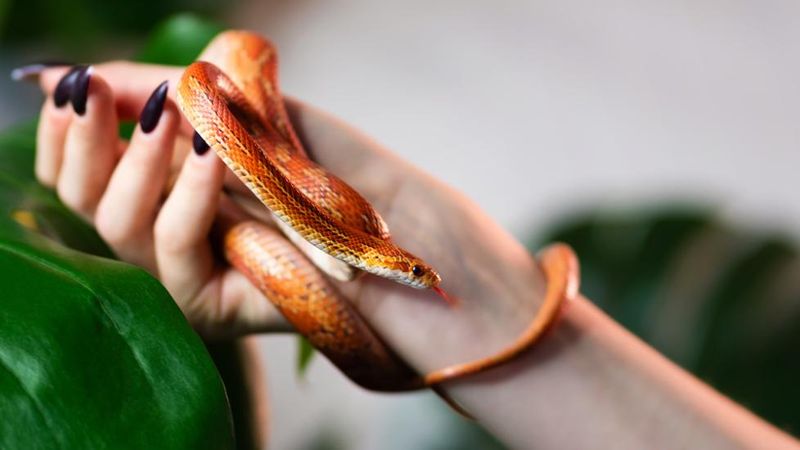
Corn snakes are the perfect pet snake for both beginners and experienced enthusiasts. They are known for their striking patterns and colors, which resemble the kernels of corn. These snakes are non-venomous and have a calm disposition, making them easy to handle.
Corn snakes require a simple enclosure with hiding spots and climbing opportunities. They are escape artists, so ensuring their habitat is secure is essential. Their feeding needs are straightforward, typically involving pre-killed mice, and they only need to eat once every week or two.
Crested Gecko

Crested geckos are known for their expressive eyes and ‘eyelashes.’ They are nocturnal and enjoy climbing, which makes them fun to observe at night. Their care is straightforward, requiring a humid environment with plenty of vertical space.
These geckos are particularly popular due to their varied color patterns and gentle nature. They do not require live food, as they thrive on commercial gecko diet. This makes them an excellent choice for those who prefer not to handle live insects.
Blue Tongue Skink
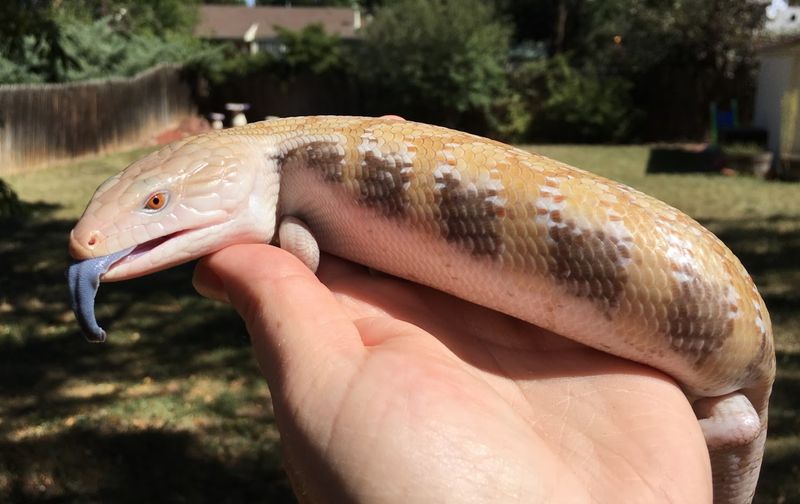
With a personality as striking as its appearance, the blue tongue skink is a favorite among reptile lovers. Its vibrant blue tongue is not just for show; it helps to ward off predators. These skinks are known for being friendly and easy to care for, making them suitable for beginners.
They require a spacious enclosure with a substrate they can burrow into. Their diet is diverse, including fruits, vegetables, and small insects. Their curious nature means they enjoy exploring their habitat, providing endless entertainment for their owners.
Russian Tortoise
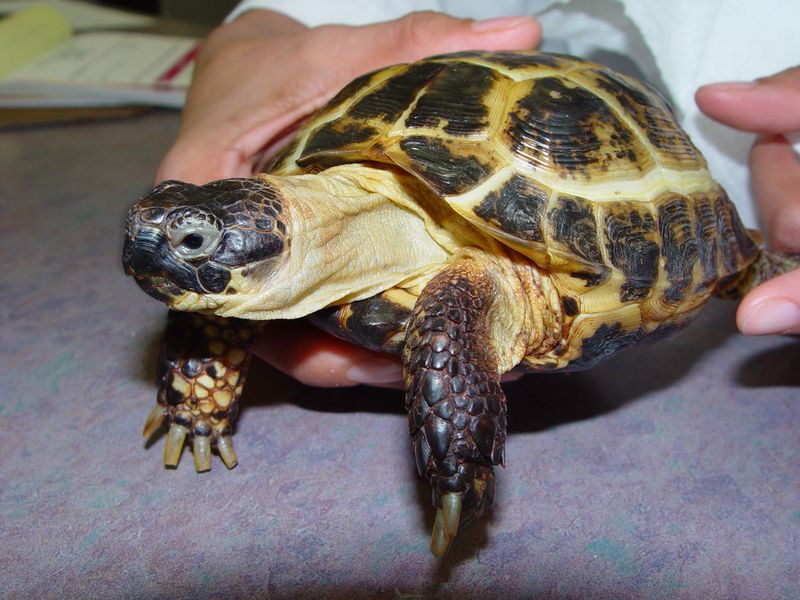
Russian tortoises are hardy, small tortoises that are perfect pets for those with limited space. They have a gentle temperament and are easy to care for, requiring a simple outdoor enclosure or indoor habitat.
These tortoises enjoy a diet of leafy greens and vegetables. They are known for their long lifespan, often living for over 40 years, so they can be lifelong companions. Russian tortoises also hibernate in colder climates, which is a fascinating aspect of their biology.
Ball Python
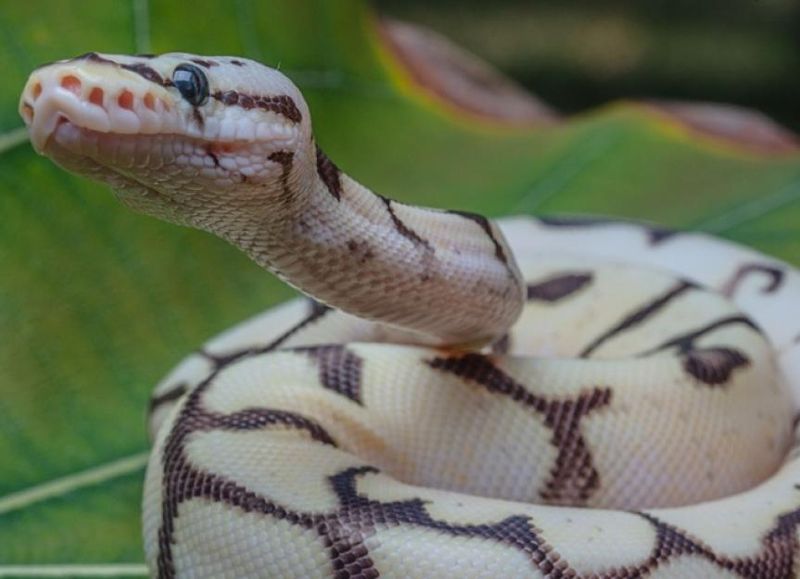
Ball pythons are one of the most popular pet snakes due to their docile nature and manageable size. They are named for their tendency to curl into a ball when threatened. These snakes are non-venomous and easy to handle, making them ideal for first-time snake owners.
Their care requirements include a secure enclosure with proper humidity and temperature. They feed on rodents and need to eat every one to two weeks. With their array of color morphs, ball pythons offer a visually stunning addition to any reptile collection.
Green Anole
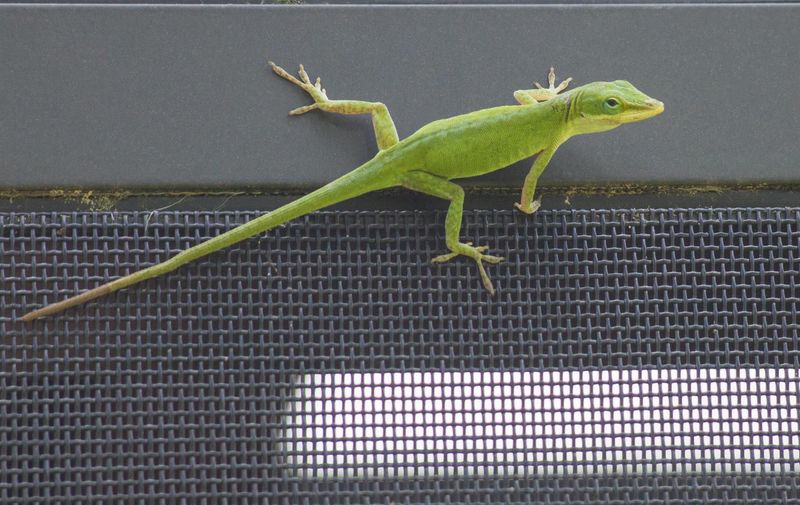
Green anoles are small, agile lizards that are perfect for those new to reptile keeping. Known for their vivid green color and ability to change shades, they are often called “American chameleons.” These lizards thrive in a well-planted enclosure with ample humidity.
Their care is relatively simple, as they require a diet of small insects. Green anoles are active during the day and enjoy basking in the sun. Their curious nature makes them an entertaining pet to observe as they explore their surroundings.
Red-Eared Slider

Red-eared sliders are aquatic turtles known for their distinctive red markings. They are excellent swimmers and enjoy basking on rocks. These turtles are best suited for those with space for a larger tank, as they require both water and a dry area.
Their diet consists of aquatic plants, insects, and commercial turtle food. Red-eared sliders can live for decades, making them a long-term commitment. Their playful nature and vibrant appearance make them a favorite among turtle enthusiasts.
Frilled Dragon
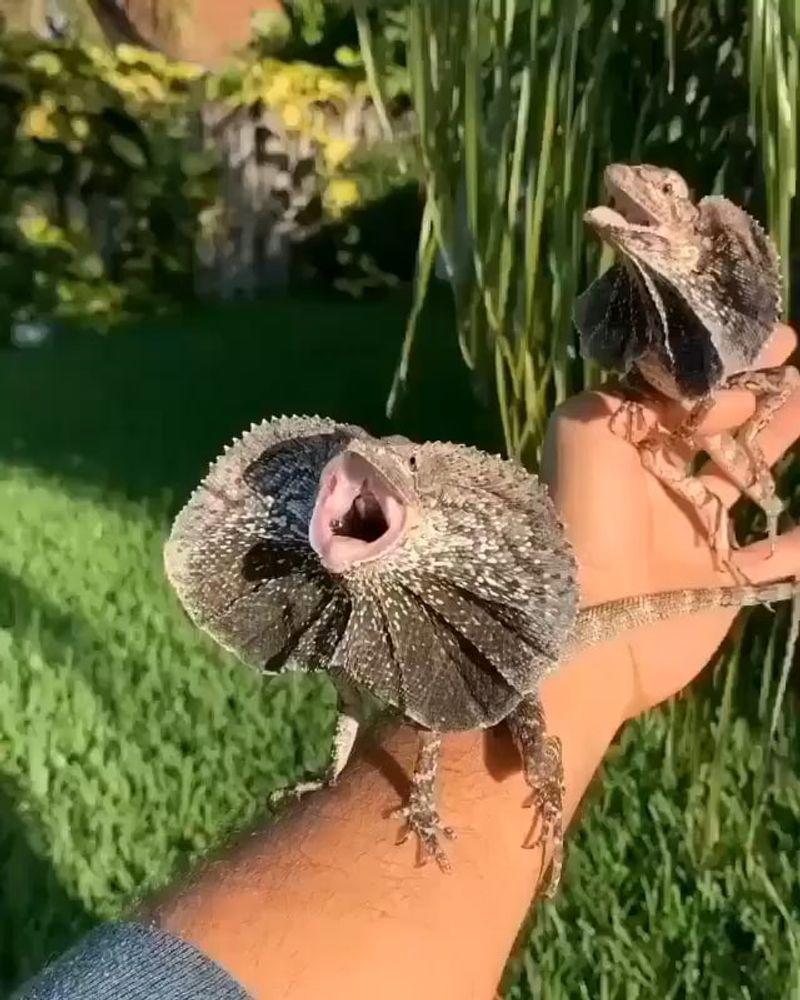
Frilled dragons, with their iconic frill that fans out around their head, resemble mini dinosaurs. This dramatic display is both a defense mechanism and a way to regulate temperature. These reptiles are active and curious, often seen sprinting across their habitat.
They require a spacious enclosure with climbing branches and a warm environment. Their diet consists of insects and occasional vegetables. Frilled dragons are a unique addition to any reptile collection, offering a glimpse into the prehistoric past with their extraordinary appearance.
Chinese Water Dragon
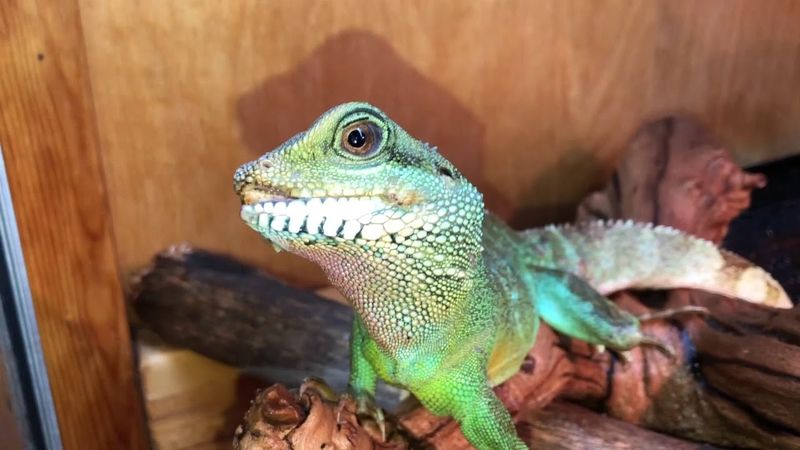
Chinese water dragons captivate with their vivid green scales and dinosaur-like appearance. Known for their love of water, they enjoy spending time swimming and require a large enclosure to accommodate their active lifestyle.
These dragons are social creatures and can form bonds with their owners. Their diet consists of insects, small fish, and leafy greens. Chinese water dragons offer a taste of the exotic and are a delightful challenge for experienced reptile keepers seeking something unusual.
Gargoyle Gecko

Gargoyle geckos, native to New Caledonia, are recognized for their horn-like features and rugged appearance, evoking images of ancient reptiles. These nocturnal creatures enjoy climbing and require an enclosure with branches and plenty of vertical space.
They thrive on a diet of fruit puree and insects, making them relatively easy to care for. Their unique look and calm demeanor make them a favorite among gecko enthusiasts. Gargoyle geckos provide a glimpse into the past with their prehistoric appearance and intriguing behaviors.
Horned Lizard

Horned lizards, known for their spiny bodies and horn-like features, look straight out of the dinosaur era. These reptiles are famous for their ability to squirt blood from their eyes as a defense mechanism, though this behavior is rare.
They thrive in arid environments, requiring a sandy enclosure with rocks and sparse vegetation. Their diet mainly consists of ants and small insects. Horned lizards are captivating to observe, offering a fascinating window into the evolutionary adaptations of reptiles.
Sailfin Dragon

Sailfin dragons are large, impressive reptiles that resemble aquatic dinosaurs. Their distinctive sail, a skin flap running along their back, is used for swimming and displays. These dragons require a spacious, humid environment with both land and water areas.
Their diet includes insects, small fish, and leafy greens. Sailfin dragons are known for their striking appearance and active behavior, making them a rewarding pet for experienced keepers. Their dinosaur-like features captivate all who see them, offering a living slice of prehistory.
Armadillo Lizard

Armadillo lizards, with their ability to curl up into a ball, resemble miniature dinosaurs with armor. Their spiky tails and scaly skin offer protection against predators. These lizards are sociable and can be kept in groups, adding to their appeal as pets.
They require a dry, rocky habitat with plenty of hiding spots. Their diet consists of insects and small invertebrates. Armadillo lizards are fascinating creatures that provide endless interest with their unique behaviors and prehistoric appearance, making them a standout addition to any reptile enthusiast’s collection.

